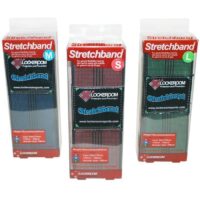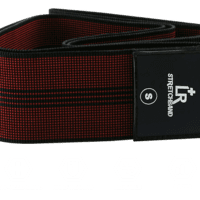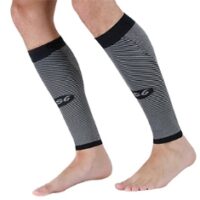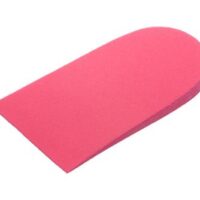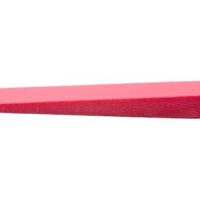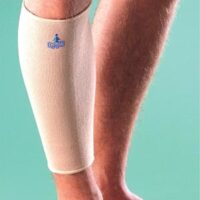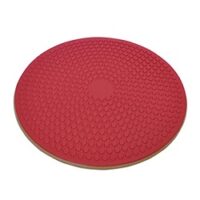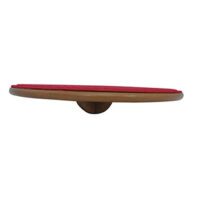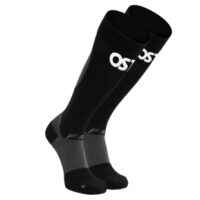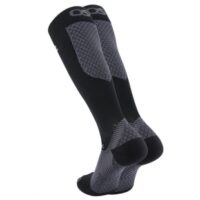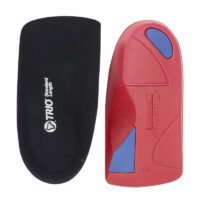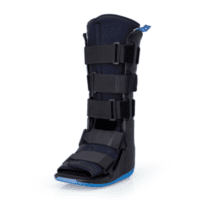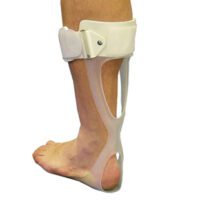Calf Pain
Article by John Miller


Calf Pain
Understanding, Managing, and Preventing
Introduction to Calf Pain
Calf pain is a frequent issue among individuals who engage in sports involving running, jumping, hopping, and landing. The calf muscle group, consisting of the gastrocnemius and soleus muscles, attaches to the Achilles tendon. Common injuries include Achilles tendinopathy and ruptured Achilles tendons. However, with timely and appropriate treatment, these injuries can heal effectively.
The Anatomy and Causes of Calf Pain
The calf muscle, crucial for movement and stability, can suffer from both muscle and tendon injuries. These injuries often result from excessive forces during explosive movements, eccentric loading, or muscle fatigue. A prevalent injury is a calf muscle tear.
Shin pain is also common in weight-bearing sports. The calf muscles cushion the shin bone (tibia) from impact. However, too much stress on the shin bone can lead to shin pain and associated injuries, like shin splints.
Recognising Referred Calf Pain
Sometimes, calf pain doesn’t originate in the calf itself. For instance, sciatica, caused by a pinched nerve in the lower back, often results in referred calf pain. Physiotherapy usually successfully manages this condition, though some cases may require spinal surgery.
Deep Venous Thrombosis (DVT): A Critical Concern
DVTs pose a significant health risk, potentially leading to pulmonary embolism (PE), stroke, or even death. Identifying and ruling out DVT is a crucial aspect of calf pain assessment. Symptoms of a DVT in the calf include swelling, pain, redness, warmth, worsening pain on foot and toe flexion, night cramps, skin discolouration, and risk factors such as prolonged immobility, recent surgery or trauma, obesity, heart conditions, pregnancy, high altitudes, hormonal therapies, cancer, advanced age, and certain medical conditions.
If you suspect a DVT, you should act immediately and either present yourself at a hospital emergency, consult your doctor or call 000.
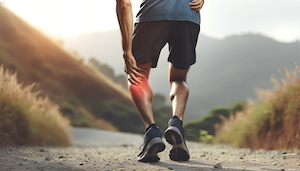

Calf Pain Treatment
Accurate assessment and early intervention are key to treating calf pain effectively. Most cases respond well to physiotherapy, allowing individuals to return to their daily activities pain-free.
Recent Research and Developments
Recent studies emphasise the importance of a holistic approach to treating calf pain. This includes not just focusing on the site of pain but considering contributing factors such as overall foot and lower limb biomechanics, muscle strength, and flexibility. Advances in physiotherapy techniques, like dry needling and targeted muscle strengthening exercises, have shown promising results in treating and preventing calf injuries.
Prevention and Management Tips
- Regular stretching, foam rolling and strengthening exercises for the calf muscles.
- Adequate warm-up before engaging in sports.
- Proper footwear that provides sufficient support.
- Gradual increase in training intensity to avoid overloading the muscles.
- Staying hydrated and maintaining a balanced diet to support muscle health.
Conclusion: The Role of Your Physiotherapist
If you’re experiencing calf pain, it’s essential to consult a physiotherapist or doctor. They can provide a tailored assessment and treatment plan, ensuring a safe and speedy recovery. Your physiotherapist will also offer guidance on preventing future injuries, helping you maintain healthy, active living.
Call to Action
Don’t let calf pain hold you back. Contact your physiotherapist today for professional advice and a personalised treatment plan. Your journey to recovery and prevention starts with a step towards professional care.
Related Articles
- Calf Muscle Tears: Learn about the symptoms, causes, and treatment options for calf muscle tears, a common cause of calf pain.
- Achilles Tendinopathy: Discover the latest treatment techniques and preventive measures for Achilles tendinopathy, closely related to calf pain.
- Shin Splints: Gain insights into how shin splints occur and their connection to calf muscle stress, offering prevention and management strategies.
- Sciatica and Lower Back Pain: Explore how sciatica can cause referred pain in the calf and the treatments available to manage this condition.
- Footwear and Orthotics for Calf Pain: Learn how the right footwear and orthotics can play a crucial role in preventing and managing calf pain.
- Running Injuries and Prevention: For athletes and runners, this article provides insights into common running injuries, including those affecting the calf, and how to prevent them.
- Dry Needling for Calf Pain: An overview of modern physiotherapy techniques such as dry needling that are effective in treating calf pain.
- Hydration and Nutrition for Muscle Health: This article discusses the role of hydration and a balanced diet in supporting muscle health and preventing calf pain.
Article by John Miller
Calf Pain: Common Causes, Treatments and Solutions
Your Guide to Managing Calf Pain Effectively
Suffering from calf pain can throw a wrench in your daily routine, whether you're hitting the gym or just keeping up with your active lifestyle. Understanding the root causes of calf pain is essential for effective management and prevention. Let's dive into the common culprits of calf discomfort and how you can address them, guided by advice from physiotherapists.Calf Strains and How to Handle Them
Calf strains frequently occur among the physically active, marked by a sudden sharp pain or discomfort during movement. Adopting the RICE method—rest, ice, compression, and elevation—plays a pivotal role in treatment. More info: Strained Calf MuscleFacing Compartment Syndrome
Compartment syndrome is a serious condition where muscle pressure escalates to harmful levels, impeding blood flow and depriving muscle and nerve cells of necessary nutrients and oxygen. Prompt diagnosis is key to avoiding long-term damage. More info: Compartment SyndromeCombatting Cramps: Tips for Athletes
Muscle cramps often signal fatigue, dehydration, or electrolyte imbalance. Staying hydrated and maintaining a diet rich in essential nutrients can help prevent cramps, ensuring you stay on top of your game. More info: Muscle CrampsNavigating Achilles Injuries
Achilles injuries range from tendinopathy due to overuse to acute ruptures. These conditions require careful attention and, in the case of ruptures, immediate treatment to facilitate recovery and prevent further injury. More info: Achilles Tendinopathy

Incorporating New Research
Recent studies underscore the importance of targeted rehabilitation exercises and the potential benefits of other therapies in treating calf muscle pain. These advanced treatments can significantly improve outcomes, particularly for persistent cases. Please ask the advice of your physiotherapist or doctor on the nest treatment options or you.Dry Needling: A Game-Changer for Calf Muscle Pain
In recent years, dry needling has emerged as a revolutionary approach to alleviating muscle pain, offering a unique solution for those struggling with persistent calf discomfort. This technique involves inserting thin needles into specific points within the muscle, known as trigger points, to stimulate healing and relieve pain.Why Consider Dry Needling?
Physiotherapists recommend dry needling for several reasons:- Targeted Relief: By focusing on trigger points, dry needling works directly on the source of pain, providing rapid relief.
- Enhanced Recovery: This method not only reduces pain but also improves flexibility and increases blood flow, speeding up the recovery process.
- Complements Other Treatments: Dry needling can be used in conjunction with other physiotherapy treatments, such as manual therapy and exercises, to enhance overall effectiveness.
Is Dry Needling Right for You?
While dry needling is safe and effective for many, it's essential to consult with a physiotherapist to determine if this treatment is suitable for your specific condition. Your physiotherapist will assess your calf pain, taking into account your medical history and treatment preferences, to recommend the best approach for you. More info: Dry NeedlingConclusion: Embracing Comprehensive Care for Calf Muscle Pain
Calf pain need not hold you back from enjoying an active, fulfilling life. By understanding the causes, exploring treatment options like dry needling, and seeking professional advice, you can take control of your pain and embark on a path to recovery. Remember, a tailored approach to treatment, combining traditional physiotherapy methods with innovative techniques like dry needling, often yields the best results.What to Do? When to Seek Professional Advice
Experiencing calf muscle pain? Don't let it sideline you. Consult with a skilled physiotherapist or doctor for personalised advice and treatment options. Remember, early intervention can prevent complications and get you back on your feet sooner.Related Articles
- Calf Pain - Discover how common activities like running can lead to calf pain and the steps you can take to prevent it.
- Calf Strain & Calf Tear: Physio Treatment, And Recovery - Learn about the treatment and recovery process for calf strains and tears, essential information for anyone physically active.
- Achilles Rupture: Causes, Treatment & Management Options - Get insights into the causes of Achilles ruptures and the treatment options available for recovery.
- Compartment Syndrome - Explore the critical condition of compartment syndrome, its effects on the muscles, and the importance of timely treatment.
- Achilles Tendinopathy - Understand the symptoms of Achilles tendinopathy and the steps towards recovery.
- Leg Pain - This article provides a broad overview of leg pain, including causes related to the calf, and treatment options.
- Calf Pain Relief Products: Relieve Calf Muscle Pain Effectively - Discover how the OPPO 1010 Shin Support can provide relief for shin and calf pain.
- Moon Boot For Effective Lower Leg Injury Recovery - Find out how a moon boot can aid recovery from lower leg injuries, including those affecting the calf.
- Retrocalcaneal Bursitis - Learn about the impact of retrocalcaneal bursitis on the calf and treatment options.



